Mazda CX-30 vs VW Tiguan – Erot ja hinnat vertailussa
Olipa kyse arjesta, perheestä tai pitkistä matkoista – tässä näkyvät erot.
Selvitä, sopiiko Mazda CX-30 vai VW Tiguan paremmin elämäntyyliisi.
The Showdown of Compact SUVs: Mazda CX-30 vs. VW Tiguan
In the ever-competitive compact SUV segment, two models stand out for their blend of performance, efficiency, and style: the Mazda CX-30 and Volkswagen Tiguan. Both vehicles aim to offer superior driving experiences, but they cater to slightly different audiences. This comparison will delve into their technical specifications and innovations to help you choose the perfect SUV for your needs.
Design and Dimensions
The Mazda CX-30 boasts a contemporary design philosophy with sleek contours and a refined look. It measures 4,395 mm in length, 1,795 mm in width, and 1,540 mm in height. The VW Tiguan, on the other hand, features a more traditional SUV silhouette, larger in stature at 4,539 mm in length, 1,842-1,859 mm in width, and 1,656-1,658 mm in height. While both offer a rugged design, the CX-30 leans towards a sporty aesthetic, whereas the Tiguan emphasizes a commanding road presence.
Powertrains and Performance
The Mazda CX-30 comes with a choice of petrol mild hybrid engines offering a power range between 140-186 HP, catered to either front-wheel or all-wheel-drive systems. Accelerating from 0-100 km/h takes between 8.3 to 10.3 seconds, and it can reach a top speed of up to 204 km/h. Options for both manual and automatic transmissions provide flexibility for drivers.
Volkswagen Tiguan offers a more varied engine lineup, including petrol, mild hybrid, plugin hybrid, and diesel. It boasts a power output from 130 to 272 HP and offers only automatic transmission options, specifically a dual-clutch automatic, for smooth and efficient gear changes. It accelerates from 0-100 km/h in as quick as 5.9 seconds. A plugin hybrid variant impressively claims an electric range of 112-113 km on a single charge, enhancing fuel efficiency.
Fuel Efficiency and Environmental Impact
Mazda’s less complex MHEV system allows the CX-30 to deliver a combined fuel consumption ranging between 5.7 to 6.6 L/100 km, emitting between 129 to 148 g/km of CO2, placing it within the D-E efficiency class. This efficiency makes it an attractive option for eco-conscious drivers.
The Tiguan’s range of powertrains offers a broader spectrum of fuel consumption rates. Particularly, its plugin hybrid variant showcases impressive fuel efficiency at just 0.4 to 0.5 L/100 km and CO2 emissions as low as 8-10 g/km, classifying it within the B efficiency class. Standard engines consume between 5.3 to 8.5 L/100 km, with emissions spanning 139 to 193 g/km.
Interior and Cargo Space
Both vehicles comfortably seat five passengers. The CX-30 offers a trunk capacity of approximately 430 liters, enough for daily tasks and medium-sized luggage. The Tiguan, highlighting its larger build, comes with a more generous cargo space of up to 652 liters, appealing to those who prioritize practicality and space.
Conclusion
Choosing between the Mazda CX-30 and VW Tiguan largely depends on personal preferences and priorities. The CX-30 shines with its sporty, compact design, and economical engines, making it ideal for city dwellers and those seeking a stylish ride. On the other hand, the Tiguan stands out with its versatile engine lineup, spacious interior, and advanced hybrid options, perfect for families and adventurers needing extra space and versatility.
Both models bring a unique set of innovations and practical features, each projecting a strong case within the competitive SUV market.
Tässä mennään yksityiskohtiin: tekniset erot tarkemmin
Kustannukset ja kulutus: Hinta ja kulutus ovat tärkeimpiä ostopäätökseen vaikuttavia tekijöitä – ja juuri täällä erot usein korostuvat.
Mazda CX-30 on hinnassa huomattava edullisempi – sen lähtöhinta on 29400 €, kun taas VW Tiguan maksaa 38300 €. Ero on noin 8810 €.
Polttoaineenkulutuksessa näkyy ero: VW Tiguan kuluttaa 0.40 L ja on siten selvä taloudellisempi kuin Mazda CX-30, jonka kulutus on 5.70 L. Ero on noin 5.30 L /100 km.
Moottori ja suorituskyky: Teho, vääntömomentti ja kiihtyvyys kertovat paljon auton ajotuntumasta. Tässä näkyy, kumpi tarjoaa enemmän ajamisen iloa.
Moottoritehossa VW Tiguan on erottuva etulyöntiasemassa – 272 hv verrattuna 186 hv:een. Ero on noin 86 hv hv.
Kiihdytyksessä 0–100 km/h VW Tiguan on vakuuttava nopeampi – 5.90 s vs. 8.30 s. Ero on noin 2.40 s sekuntia.
Huippunopeudessa VW Tiguan on pienessä määrin edellä – se yltää 242 km/h:een, kun taas Mazda CX-30 saavuttaa 204 km/h. Ero on noin 38 km/h.
Vääntömomentissa näkyy myös ero: VW Tiguan vetää ilmeinen voimakkaammin, 400 Nm verrattuna 240 Nm:een. Eroa on noin 160 Nm.
Tila ja käytännöllisyys: Tehon ohella arjessa ratkaisevat mukavuus ja käytännöllisyys. Tässä selviää, kumpi auto on monipuolisempi ja tilavampi.
Molemmissa autoissa on tilaa 5 henkilölle.
Omapainossa Mazda CX-30 on vähäinen kevyempi – 1455 kg verrattuna 1599 kg:een. Painoero on noin 144 kg.
Tavaratilan koossa VW Tiguan tarjoaa selvästi havaittava enemmän – 652 L verrattuna 430 L:een. Ero on noin 222 L.
Maksimikantavuudessa VW Tiguan pärjää jonkin verran paremmin – jopa 1650 L, noin 244 L enemmän kuin Mazda CX-30.
Kantavuudessa VW Tiguan on melkein huomaamaton parempi – 533 kg verrattuna 496 kg:een. Ero on noin 37 kg.
Yhteenvetomme: VW Tiguan osoittautuu olevan voittaa vertailun selvästi ja saa siksi tittelin DriveDuel Champion!
Tässä vertailussa VW Tiguan on monipuolisempi kokonaisuus.
Mazda CX-30
Mazda CX-30 yhdistää tyylikkään ulkonäön ja huipputeknologian, mikä tekee siitä erinomaisen valinnan kaupunkiajoon ja pidemmille matkoille. Sen tilava sisustus ja korkealaatuiset materiaalit tarjoavat mukavuutta ja käytännöllisyyttä kaikille matkustajille. Suzukilla on taito kehittää autoja, jotka ovat sekä nautinnollisia ajaa että ympäristöystävällisiä.
Tiedot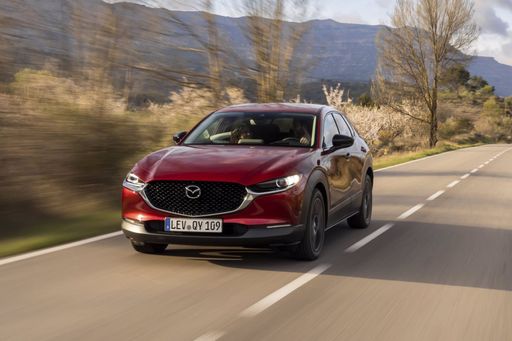 @ de.mazda-press.com
@ de.mazda-press.com
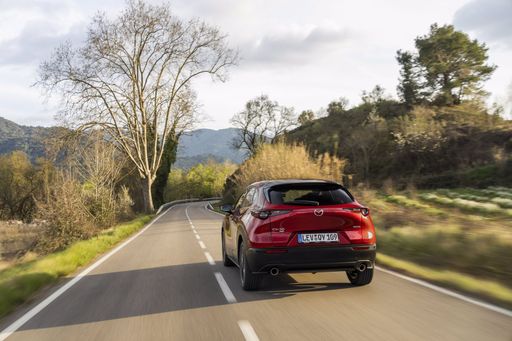 @ de.mazda-press.com
@ de.mazda-press.com
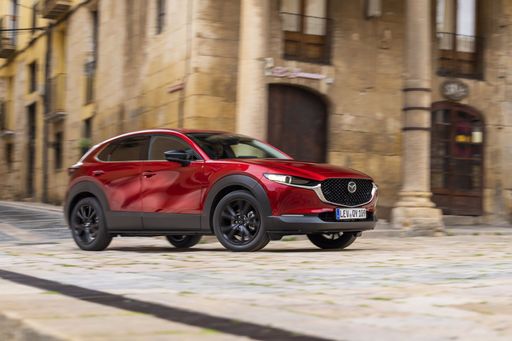 @ de.mazda-press.com
@ de.mazda-press.com
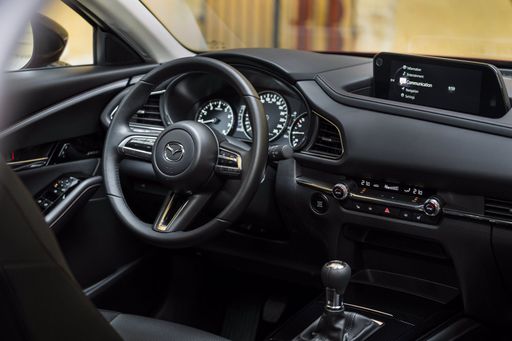 @ de.mazda-press.com
@ de.mazda-press.com
VW Tiguan
Volkswagen Tiguan yhdistää tyylikkyyden ja käytännöllisyyden erinomaisella tavalla. Sen tilava sisustus tarjoaa mukavuutta kaikille matkustajille, samalla kun modernit teknologiat tekevät ajokokemuksesta miellyttävän. Tiguanin maasto-ominaisuudet ja taloudellisuus tekevät siitä houkuttelevan vaihtoehdon niin kaupunkiajamiseen kuin pidemmillekin matkoille.
Tiedot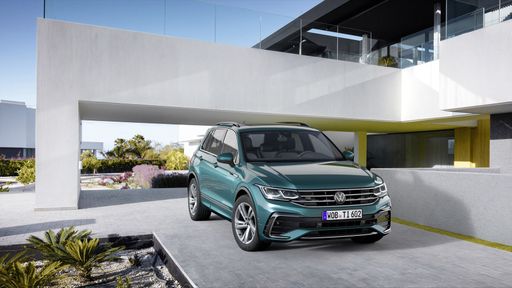 @ Volkswagen
@ Volkswagen
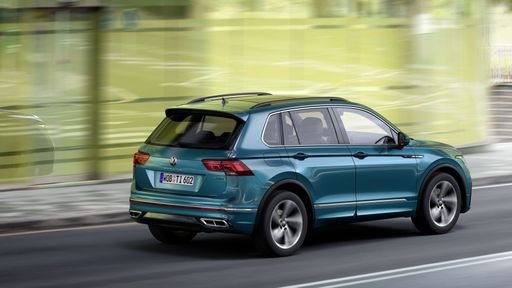 @ Volkswagen
@ Volkswagen
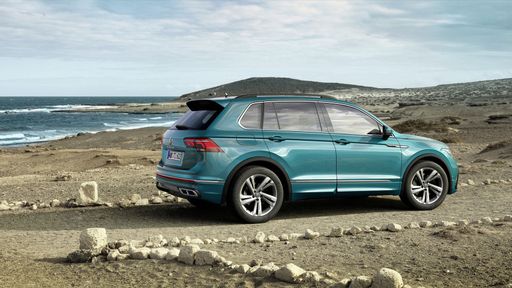 @ Volkswagen
@ Volkswagen
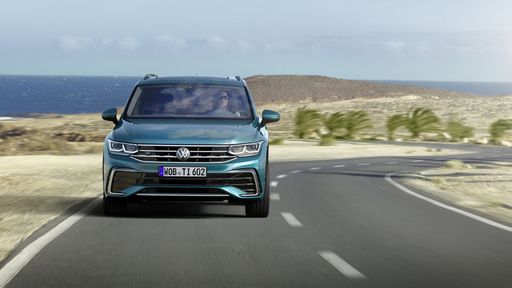 @ Volkswagen
@ Volkswagen
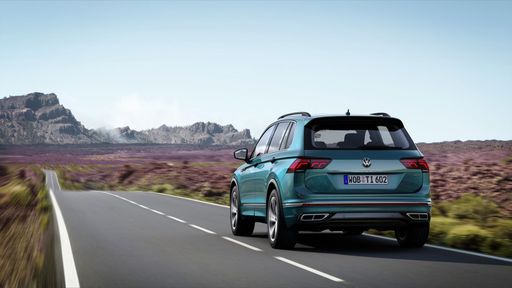 @ Volkswagen
@ Volkswagen
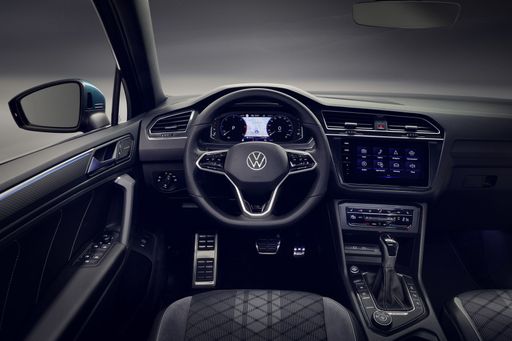 @ Volkswagen
@ Volkswagen

|

|
|
|
|
Kustannukset ja kulutus |
|
|---|---|
|
Hinta
29400 - 42900 €
|
Hinta
38300 - 60500 €
|
|
Kulutus L/100km
5.7 - 6.6 L
|
Kulutus L/100km
0.4 - 8.4 L
|
|
Kulutus kWh/100km
-
|
Kulutus kWh/100km
-
|
|
Sähköinen toimintasäde
-
|
Sähköinen toimintasäde
119 - 129 km
|
|
Akun kapasiteetti
-
|
Akun kapasiteetti
19.70 kWh
|
|
CO2
129 - 148 g/km
|
CO2
8 - 190 g/km
|
|
Polttoainesäiliön tilavuus
48 - 51 L
|
Polttoainesäiliön tilavuus
45 - 58 L
|
Mitat ja kori |
|
|---|---|
|
Kori
SUV
|
Kori
SUV
|
|
Istuimet
5
|
Istuimet
5
|
|
Ovet
5
|
Ovet
5
|
|
Omamassa
1455 - 1587 kg
|
Omamassa
1599 - 1890 kg
|
|
Tavaratila
422 - 430 L
|
Tavaratila
490 - 652 L
|
|
Pituus
4395 mm
|
Pituus
4539 mm
|
|
Leveys
1795 mm
|
Leveys
1842 - 1859 mm
|
|
Korkeus
1540 mm
|
Korkeus
1656 - 1658 mm
|
|
Maksimi tavaratila
1398 - 1406 L
|
Maksimi tavaratila
1486 - 1650 L
|
|
Kantavuus
458 - 496 kg
|
Kantavuus
460 - 533 kg
|
Moottori ja suorituskyky |
|
|---|---|
|
Moottorityyppi
Bensiini MHEV
|
Moottorityyppi
Plug-in hybridi, Bensiini, Bensiini MHEV, Diesel
|
|
Vaihteisto
Manuel, Automaatti
|
Vaihteisto
Automaatti
|
|
Vaihteiston tyyppi
Manuaalivaihteisto, Automaattivaihteisto
|
Vaihteiston tyyppi
Kaksoiskytkin automaatti
|
|
Vetotapa
Etuveto, Neliveto
|
Vetotapa
Etuveto, Neliveto
|
|
Teho hv
140 - 186 hv
|
Teho hv
130 - 272 hv
|
|
Kiihtyvyys 0-100 km/h
8.3 - 10.3 s
|
Kiihtyvyys 0-100 km/h
5.9 - 10.6 s
|
|
Huippunopeus
191 - 204 km/h
|
Huippunopeus
198 - 242 km/h
|
|
Vääntömomentti
238 - 240 Nm
|
Vääntömomentti
220 - 400 Nm
|
|
Sylinterien lukumäärä
4
|
Sylinterien lukumäärä
4
|
|
Teho kW
103 - 137 kW
|
Teho kW
96 - 200 kW
|
|
Iskutilavuus
1998 - 2488 cm3
|
Iskutilavuus
1498 - 1984 cm3
|
Yleiset |
|
|---|---|
|
Mallivuosi
2025
|
Mallivuosi
2024 - 2025
|
|
CO2-tehokkuusluokka
D, E
|
CO2-tehokkuusluokka
B, G, D, E, F
|
|
Merkki
Mazda
|
Merkki
VW
|
Millaisia voimalinjoja Mazda CX-30:ssa on saatavilla?
Mallia tarjotaan Etuveto tai Neliveto-versiona.
Näytetyt hinnat ja tiedot ovat arvioita, jotka perustuvat Saksan listahintoihin, ja voivat vaihdella maittain. Nämä tiedot eivät ole oikeudellisesti sitovia.
